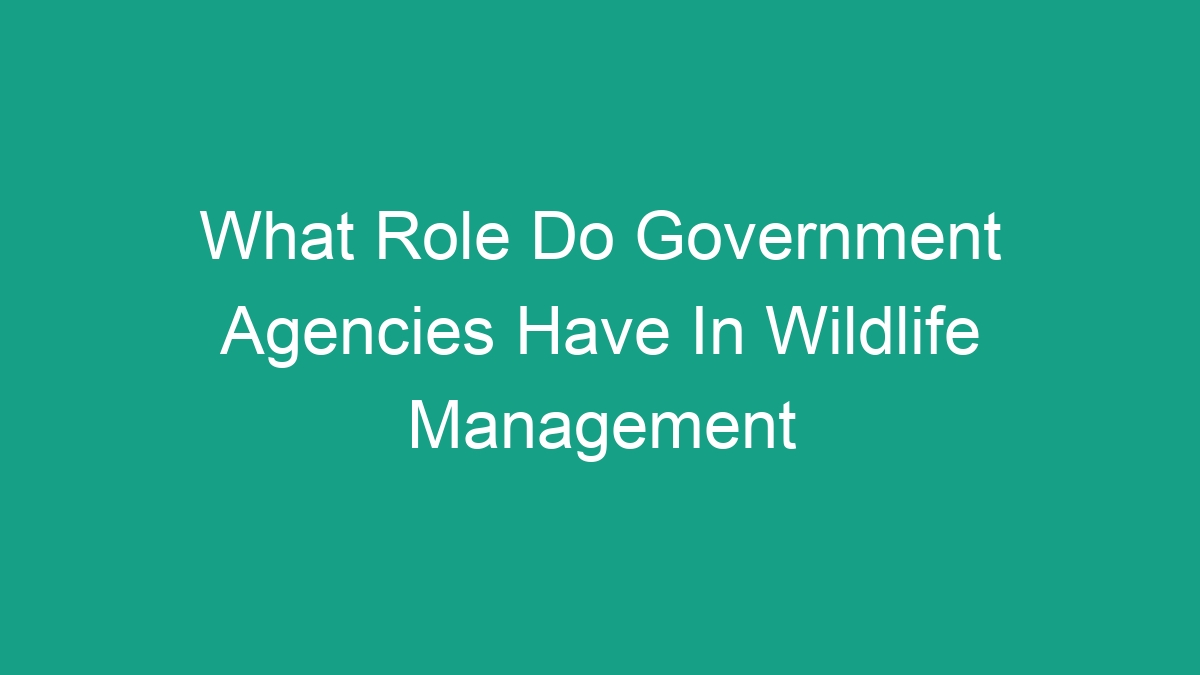
Wildlife management is an essential aspect of conservation and protection of the environment. It involves monitoring and controlling the population, habitat, and behavior of various wildlife species to ensure ecological balance and sustainability. Government agencies play a crucial role in wildlife management by enacting laws and regulations, conducting research, and implementing conservation programs.
Regulation and Legislation
One of the primary roles of government agencies in wildlife management is the regulation and enforcement of laws. Government agencies create and enforce laws regarding the hunting, trapping, and protection of wildlife species. These laws are designed to prevent overexploitation of wildlife populations and ensure sustainable management practices.
Government agencies also regulate the trade of wildlife products to prevent illegal trafficking and poaching. For example, the United States Fish and Wildlife Service (USFWS) enforces the Endangered Species Act, which provides protection for threatened and endangered species and their habitats.
Research and Monitoring
Government agencies conduct research and monitoring to gather essential data on wildlife populations, habitats, and behaviors. This information is used to assess the status of various species and make informed management decisions. Government researchers use a variety of methods, such as population surveys, radio tracking, and habitat assessments, to collect data on wildlife populations.
For example, the USFWS conducts regular population surveys of migratory bird species to monitor population trends and inform hunting regulations. These research efforts provide valuable information for developing conservation strategies and identifying the factors impacting wildlife populations.
Habitat Conservation and Restoration
Government agencies play a critical role in protecting and restoring wildlife habitats through land management and conservation programs. They acquire and manage public lands to establish wildlife refuges, parks, and conservation areas to safeguard critical habitats for wildlife species.
- Government agencies collaborate with private landowners and conservation organizations to implement habitat restoration projects, such as reforestation, wetland restoration, and invasive species control, to improve habitat quality for wildlife.
- These efforts help to preserve biodiversity, maintain healthy ecosystems, and provide essential habitats for wildlife species to thrive.
Public Outreach and Education
Government agencies engage in public outreach and education to raise awareness about wildlife conservation and management. They provide resources and educational programs to inform the public about the importance of wildlife conservation and promote responsible stewardship of natural resources.
- Examples of these efforts include interpretive programs in national parks, educational materials for schools, and public awareness campaigns to reduce wildlife disturbances and conflicts.
- By fostering a better understanding of wildlife management issues, government agencies can garner support for conservation initiatives and encourage public involvement in wildlife conservation efforts.
Collaboration and Partnerships
Government agencies work collaboratively with other organizations and stakeholders to address wildlife management challenges. They partner with non-profit organizations, academic institutions, and tribal groups to develop and implement conservation initiatives.
- These collaborations facilitate the sharing of knowledge, resources, and expertise to achieve common conservation goals.
- Through partnerships, government agencies can leverage additional support and funding for wildlife management programs, enhancing the effectiveness of conservation efforts.
Implementation of Wildlife Management Plans
Government agencies develop and implement long-term wildlife management plans to guide conservation efforts and sustainable use of wildlife resources. These plans involve the assessment of wildlife populations, identification of key habitats, and establishment of management objectives and strategies.
For example, the National Park Service develops comprehensive resource management plans for individual parks to address the specific wildlife management needs and goals of each park.
Conclusion
Government agencies play a vital role in wildlife management by enacting laws, conducting research, conserving habitats, educating the public, and collaborating with partners to ensure the sustainable conservation of wildlife. Their efforts are essential for protecting and preserving wildlife populations and their natural habitats for future generations.



